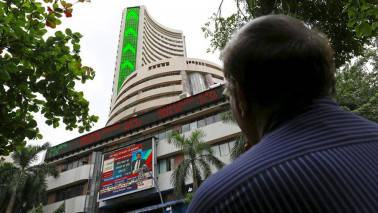Lego sets returned an average 11 percent more than large stocks, bonds, gold and other ‘hobby investments’ in the three decades ending 2015
Surprised that the plastic toys made of interlocking bricks that kids play with can be an investment theme? Then, the next statement will come as a shocker. Lego sets returned an average 11 percent more than large stocks, bonds, gold and other ‘hobby investments’ in the three decades ending 2015, says a study by Victoria Dobrynskaya, an assistant professor at Russia’s Higher School of Economics.
There is a huge secondary market for new and used Lego sets such as eBay, with tens of thousands of sets traded online globally for many times their original price.
A kit for Star Wars’ Darth Revan that retailed in 2014 for $3.99 sold for $28.46 on eBay a year later -- a 613 percent premium. The other top performers are: Elves’ Workshop (Seasonal), Seal’s Little Rock (Friends), TC-4 (Star Wars) and Ice Skating (Seasonal). All these were released in 2014 and earned 425-613 percent in the next one year (2014-15).
Inspiration for the study
Dobrynskaya is a 37-year-old London School of Economics (LSE) PhD who spent years writing papers on carry trades and momentum investing. Her interest in Lego was piqued as a topic for research after her son’s hobby steered her to a community of investors discussing how to profit from buying and selling the toy.
“My son likes playing with Lego and I have a lot of it at home. At one point I thought: maybe I have a ready-made investment portfolio?” she said. “I know that Lego has nothing to do with multifactor models I spend my time focusing on. It doesn’t mean the performance of Lego sets has absolutely nothing to do with factor investing. You’ll be surprised to know that it does.”
Dobrynskaya, who wrote the paper with student Julia Kishilova, studied historical returns (from 1987 to 2015) from a sample of 2,322 Lego sets from its most popular themes to obtain a complete picture of the attractiveness of this market to investors.
Market beating returns
In a paper titled ‘Lego -- The Toy of Smart Investors,’ Dobrynskaya found that collections used for Hogwarts Castles and Jedi star fighters beat US largecap stocks, bonds and treasury bills, yielding 11 percent a year.
The study found that Lego returns correlate slightly negatively with bonds and slightly positively with stocks. “We notice that the greatest plunges in the Lego returns occurred in the years of financial crises in other countries: 1992 – the Exchange Rate Mechanism crisis in Europe, 1998 – the Asian and Russian financial crisis, 2007 – the start of the Global financial crisis. Since in all these years the stock returns in the US were positive, we obtain low market correlation estimates and, hence, low market risk,” the study stated.
To determine the average yearly return, Dobrynskaya gathered the initial price of 2,322 toys released between 1981 and 2014 and their cost in the secondary market in 2015. She then analysed price trends for links to risk factors like value, volatility and size using models developed by theorists Eugene Fama and Kenneth French.
She found that the returns were not significantly exposed to market, value, momentum and volatility risk factors but loosely resemble those attributed to the size factor.
Size matters
The size of the kits also impacted returns, with medium-sized sets yielding significantly lower returns compared to the biggest and smallest sets. Moreover, the smallest sets yield the highest returns.
“We confirm that bigger sets yield lower returns, on average, and that the relationship between set size and returns is U-shaped. The greater number of mini-figures, which is usually associated with greater set size, has an additional negative effect on returns,” it found.
According to the data, sets with a relatively few pieces (up to 113), returned 22 percent per year, almost 16 percentage points more than the group with about 860 bricks in each. However, this relation is not perfectly linear as small sets yield the most, but those with 2,000 pieces do better than medium-sized ones.
Age too matters
Dobrynskaya found that newer sets yield higher yearly average returns than older sets. This, she hinted, could be a consequence of the growing popularity of investments in Lego and, hence, higher returns in the recent years, rather than the age of a set itself.
“It is possible that older (vintage) sets yield higher returns than newer sets in a given year, but because their average returns are calculated for longer time periods, which include the 1980s and 1990s when the Lego secondary market was not developed, we obtain lower estimates,” she added.
Popularity: Driven by films
Lego sets based on themes like Ideas, Seasonal, Super Heroes, Minecraft and Friends returned between 68 percent and 38 percent, the study found. The Simpsons is the only Lego theme that has lost value, falling by 3.5 percent on average.














